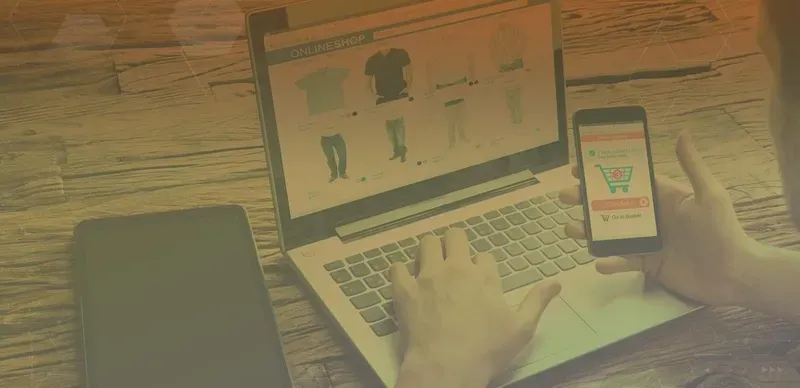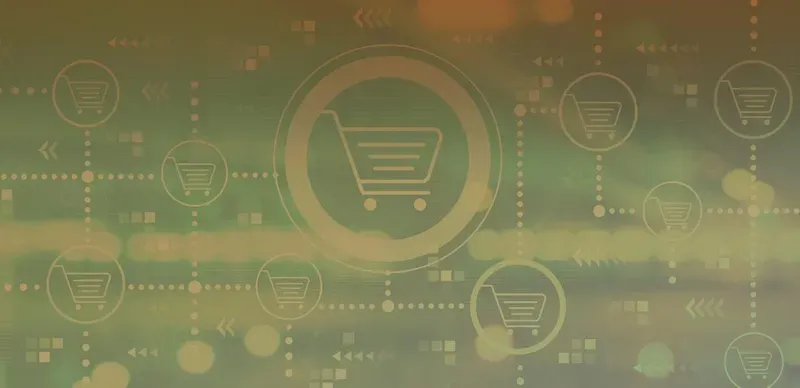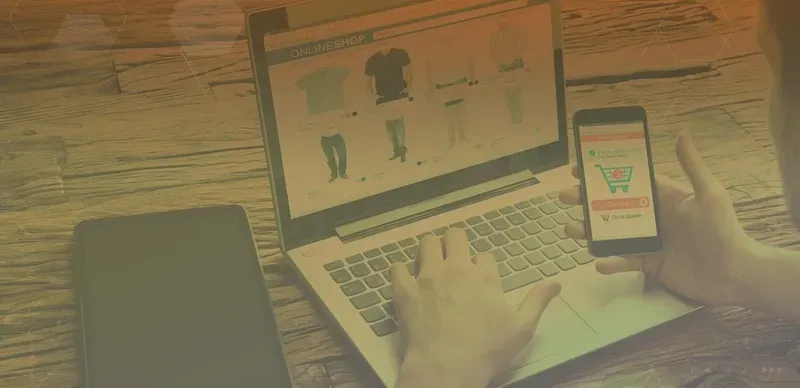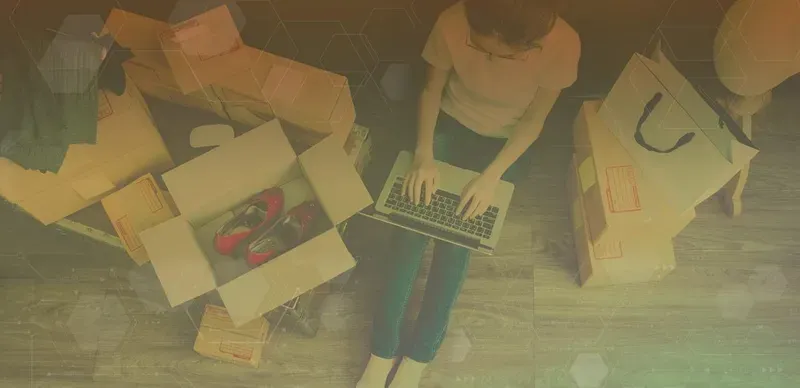
Getting from A to B? Easy, right? Not always when you have multiple products going from one place to many, at different times, in different ways and for different people. Welcome to the most confusing part of any online business: shipping.
Confusing (and yes even a little boring) shipping is nevertheless part of your brand. A big part.
After all, this is the final stage of the purchase process and the one closest to customer feedback. Even if you’ve nailed a considered customer journey, if your shipping isn’t up to scratch it’s going to reflect in your brand engagement, repeat purchases, and your overall customer experience.
Shipping can seem like a daunting and confusing whirlwind of couriers and package sizes and labels. But don’t worry, there are ways you can keep control of your brand and even make shipping work to the benefit of your company (slow shipping anyone?).
We’re covering how to cut back on expenses, how to ship in an environmentally friendly way, and how to set it all up from one place in your Shopify store.
Don’t have time to read the full article? Click here to skip to the fast hacks.
THE DELIVERY EXPERIENCE
Picture this: you’ve ordered something online. Let’s say it’s a piece of furniture, so it’s a delivery you really need to be in for. You’ve had an email telling you what day it’s due to arrive and then on that day – commence waiting.
Waiting for a delivery can be an emotional and stressful time. You’re listening for the doorbell at every moment. Can I pop out for some milk? Best not, just in case.
If you’ve had experience with this kind of delivery, you’ll know that a number of different scenarios can play out:
- Your delivery arrives in the morning and you can happily relax into your day and enjoy your new furniture.
- Your delivery comes at the tail-end of the day, possibly delivered by tired employees who’ve had numerous delays that have impacted on their schedule.
- Your furniture doesn’t arrive at all, and you later find that you’ve had an email stating that it’s not been possible to deliver.
Scenario 1 is obviously the one that both parties are looking for. The customer is happy because their expected delivery arrived on time and you have the rave reviews and positive feedback you deserve.
Scenario 2 and 3, however, will leave your customer feeling less than satisfied with the service (if you want to read more about why reviews rule, and customer service is king you can do so here). Even though scenario 2 has completed the delivery on the day specified, the longer your customer has to wait around, the lower they may rate your service. These two outcomes are usually the result of something unexpected or simply the natural delays that occur when shipping multiple products across the country (or globally). It’s a fact – not every delivery will go as planned. But there are ways to keep your customers happy through the process.
Let’s look at the statistics:
- After just one negative experience, 51% of Americans will never do business with a company again.
- More than half of adults – 66% in fact – feel that valuing their time is the most important thing a company can do to provide a good online service.
Meet expectations.
Scenario 1 is positive because we’ve met (and exceeded) expectations. But think how much better it is to give even more specific expectations. Have you considered providing a window of delivery? That way your customer can plan the rest of their day.
Ever wondered what made UBER so successful? One of the reasons it appeals to our decision-making brains is that we can see exactly where our driver is and how long it will take him to reach us. Nevermind that we don’t know the exact cost of the taxi fare – we have a ballpark figure. Both of these nuggets of information feed and manage our expectations. This can work for your deliveries too. Provide trackable information, so your customer can see where their purchase is. If you go one step further, and give a window of time in which it’s likely to be delivered, your customer is even more informed and likely to be satisfied with the service.
And that brings us to…
Communicate.
From your ‘Buy now’ button to post-delivery feedback, communicate at every stage. If you can keep the lines of communication open and transparent, you’re more likely to keep your customer in a positive state of mind should they be experiencing a delay or changes to their order. Keep it clear, even when it’s running smoothly too.
Communication touchpoints:
- Order processed successfully.
- Delivery date and time and any tracking facilities (it’s always good to include an easy way to change this here, should it be set for an inconvenient time).
- Order dispatched (you may have two stages at this point depending on whether your goods are dispatched to a warehouse first or go straight out to the customer).
- En-route communications, such as your driver is X amount of hours away.
- Confirmation of delivery.
- Feedback requested.
Be human.
Make sure you include ways for your customer to contact you should they be experiencing a delivery problem.
Now, you may be feeling the pressures of larger companies such as BooHoo and Amazon where rapid turnarounds (sometimes in under 24 hours) feel insurmountable as a small business. But there’s a wave of buyers and sellers embracing slow delivery.
Offer “Green” delivery
Slower delivery times are better for the environment. And customers are willing to pay more for the greener route. In fact, CNN reported that US customers will pay up to 5% more for something they feel is delivered in a ‘greener’ way.
Already e-Commerce can be viewed as a more eco-friendly way to purchase. There’s no energy-guzzling store and your buyers don’t have to get in their cars to visit and pick up their purchases. In fact, research has discovered that grocery deliveries can cut an enormous 80-90 percent of carbon emissions compared to customers driving to a store to pick up their own items. The impact for us comes in our delivery methods. As store owners, we should be considering the impact of the size and material of our packaging.
All of us are awakening to the impact our actions are having on the environment, and that means that there is a growing customer base considering slow delivery as a way to make an everyday difference. If you’re delivering slowly to better utilize resources, let your customers know this. Make it a clear USP (Unique Selling Point).
By covering all of the points above: communication, the human touch, and transparency, you can deliver an exceptional delivery experience without feeling the pressure of rapid turnaround times.
The cost of delivery
Underestimating the cost of shipping when starting your e-Commerce business can have a huge impact on your bottom line.
Top tip: do the math.
As boring as it sounds, taking the time at the beginning of the process to cost-up your shipping options will save you time and money in the long run. It also enables you to get a clear picture of how your finances will really look. That way you’re in a better position to offer deals to your customers, such as free or faster shipping.
When you can see the net worth of a product (that’s how much money you make after you take into account things like shipping) then you can make a call on how you want to make your products cost-effective for your customers. Roughly speaking, there are three ways to do this:
- Offer free shipping and take a hit on your margins
- Incorporate the cost of shipping into your product and offer deals over a total amount.
- Be upfront with the real cost of postage and display a flat fee.
You can see how to do all of these things below in How to set up Shopify shipping in 9 steps.
Shopify benefits for you
Shipping is the boring part of your business right? It can be. And it can be stressful and confusing. But luckily you have a Shopify store, so your shipping can be managed easily and without having to juggle multiple carriers or lengthy trips to the Post Office. For a start, Shopify gives you access to the best rates with the top carriers, such as UPS, DHL Express. Canada Post and Royal Mail. That means Shopify can offer you better deals than you would get if you went to each one independently. Manage it all from your online store or the app. You can even print labels on the move. Shopify effectively cuts out the back-and-forth that can make shipping so time consuming.
Shopify benefits for your customer
Shopify Shipping doesn’t just save you time and money, it can be beneficial for your customers. They get a seamless, well-oiled delivery service, with up-front costs, offers (because you can afford to give them) and clear, transparent communications.
Shipping on Shopify can be customized for your needs. It can be overwhelming and many find it the most complicated part of setting up and online store. After all, you have to remember that just to get a product from A to B there are many different moving parts and specifics to consider:
- country of origin country of destination
- different weights and sizes
- packaging materials
- couriers
- timing, schedules, and traffic
- cost
- and unexpected (and expected) changes along the way.
But luckily Shopify is aware of this and that’s why it’s actually easier than ever to manage deliveries using your Shopify store. Every store is different, so there are multiple ways of seeing your shipping. But at a glance, here’s how to do in nine easy steps…
SET UP SHOPIFY SHIPPING IN 9 EASY STEPS
Find the Shipping settings on your Shopify dashboard. Settings (bottom left corner) > Shipping >
- Set your Shipping origin. This is your store address or location from which your item will be dispatched. It’s needed to calculate costs.
- Set your Zones. A zone is just a region that you will be shipping to. Your place of origin will usually come up as the first Zone (so US if you’re in America or the UK if you’re based in the UK) and then give you options for the ‘Rest of the World’. You can set it to the default rate for that Zone or customize it.
- Places you don’t want to ship. There’s an option to ‘Add a Zone’ in the top right-hand corner to add multiple destinations with different rates. Once you’ve added a Country, click the Edit button and Shopify will take you a list where you can check provinces within a country. This means, for example, you can switch off delivery to certain states within the US. Then, your rates can be set and customized for every Zone and Region you ship to.
- Set your rates. Shopify gives you rate options: price-based and weight-based options. The name you give your rates is what customers will see on the page, so you want to be clear. We’d suggest using the carrier name with time-frame and cost. For example:
- UPS free next-day delivery.
- FedEx 4-day delivery for just $10.
That way it’s clear for customers and clear for you.
- Price-based rates. Want to offer free shipping with orders over $100? You need price-based shipping rates. This is what you want for free shipping over a certain amount. Check the ‘free shipping’ box and set the minimum order price. You can also set a standard shipping cost here.
- Weight-based rates. This follows a similar process to rate-based shipping but is based on how heavy your products are. So, crucially, it requires you to input the weight of products into the product information. Don’t worry, if you haven’t done this, Shopify will alert you on the Shipping page. You can add multiple weight rates (even under the same name) so that you set lower rates for lower weight items.
- Calculated rates. Shopify in the US offers discounted rates for using the calculated rates as set by the Post Office. It’s worth noting that if you have an Advanced Shopify plan this offers a link-up to third party shipping parties. So you connect FedEx and UPS carriers directly. On any plan, you can select the Services you offer from First Class to Priority Mail. Here you can alter the percentage or add a flat fee under Rate Adjustments.
- Print and package. Shopify can help you print labels and often at discounted rates and will save packages for easy distribution. You can now even print labels from your phone with the Shopify app. You can save them to print later (if you’re on the move) or control your whole shipping workflow from the app.
You can put Shopify labels on the following:
- A box. A regular package. The total of the length, width, and height should be no more than 84 inches.
- A soft pack. A padded envelope or plastic sleeve. Packages thicker than 3/4in don’t qualify for USPS First Class Mail rates.
- An envelope. A large, flat envelope no thicker than 3/4in.
- Your own flat-rate packages.
- Choose your own carrier. Alternatively, you can choose an external carrier to distribute your products.
However you personalize your deliveries, make sure that you communicate to customers. Clearly display the shipping rates and offers you have on each product and across your site.
Check your shipping rates here:
We’ve brought together the online calculators for the most commonly used shipping companies, globally.
- USPS – Shipping Calculator
- Canada Post – Shipping Calculator
- UK Royal Mail – Shipping Calculator
- Australia Post – Shipping Calculator
- UPS – Shipping Calculator
- FedEx – Shipping Calculator
Once you’ve set up your shipping, the best way to test the customer journey is to try it yourself with a sample item. That way you can troubleshoot any issues before they impact either your bottom line or your customer service.
That brings us to cost. Delivery can really affect your revenue if you miscalculate or pitch your rates too high or low. So, here’s 3 ways to make sure your store stays cost-effective.
TOP 3 WAYS TO SAVE MONEY ON DELIVERY
- Cut down on packaging. You could be sending products in packages that are slightly too large for what’s inside. Or perhaps you’re over wrapping? Cutting back on packaging can help save you in shipping costs and be better for the environment. Plus carriers like UPS and DHL offer free packaging.
- Use Shopify Shipping to access discounted rates. The team at Shopify spends a good deal of time and resources working out how to get the best rates for merchants. They can look after everything from insurance to the customer journey, so it’s an easy way to keep everything neat and tidy.
- Check your profit margins. Products that have higher profit margins can more easily absorb shipping costs. These are the ones to put your free-shipping offers on.
Let’s talk returns
Your returns policy should be two things: fair and cost-effective (that’s for you and your customer). You might have free returns or a policy that is intrinsic to your store model, like brands such as Lookiero for whom returning good is part of the process. You may have a straightforward fee for returned goods and handling. Whatever your chosen route the key to great customer service (and therefore improved retention and better reviews), keep it clear. Be open and transparent, so there are no shocks along the way. If a returns fee comes out of the blue, and only when a customer wants to return something, then you’re going to see a drop in satisfaction. They’ll be cross and upset, and we all know one bad review is worth 10 good ones.
Make your returns policy straightforward and upfront. It works in your favor if a customer can easily return goods with little stress or impact.
Shopify has a returns policy generator you can use for free. Simply enter your store details via this page: Shopify Returns Policy Generator and they’ll email you a bespoke returns policy you can use for your store. Easy.
Don’t leave them hanging.
To boost customer satisfaction in the returns process, offer perks along the way. Free returns (if that’s viable), or exchanges for cash or store credit. Most importantly, make sure you provide easy access to help and support. When things go wrong, or for your customers or are not so computer-literate, it pays to have a person at the end of the phone or a ChatBot. Even Facebook has an integration that can easily respond to customers in your out-of-hours.
Your delivery will ultimately be as personal as your store. But that doesn’t mean you have to handle everything. In short, you need to hit three key things to make it work for you and your customers. Delivery needs to be cost-effective, straightforward and well-communicated. Shopify Shipping covers all of these points and is so easy to integrate with your Shopify store.
If you need help with your shipping through Shopify contact the Shopify experts at Orange Collar. Drop us a line here.
FAST HACKS FOR SHIPPING THROUGH SHOPIFY
# Hack 1. Do the math.
Take the time to cost up your delivery options and see exactly how much it will cost your company to send each product. When you have a clear picture of how your finances look in real, working life then it’s easier to navigate deals and cost-saving offers for your customers.
# Hack 2. Set rates in Shopify Shipping.
Price-based rates, weight-based rates or set a flat rate. It’s easy to do from your Shopify dashboard. Follow these 9 steps to Shipping through Shopify.
# Hack 3. Wrap it well.
You might be overspending on too much packaging. Asses what it really needs to get to its destination safely, or make use of free packaging options from carriers like DHL Express and UPS.
# Hack 4. Get the app.
Get the Shopify app and you can manage the whole shipping process from your hand, including printing labels. Integrate with carriers like UPS and EDL Express and receive deals on shipping and easy management.
# Hack 5. Be the tortoise, not the hare.
You don’t have to compete with fast-movers like Amazon Prime, BooHoo and eBay. Shipping slower can be more eco-friendly and buyers are more aware of the impact their purchase has on the environment. Make it clear to your audience why the rates and times are the way they are, and your customers will appreciate your consideration for their needs and the environment. Read more about this here.
# Hack 6. Ready to return.
Make sure your returns policy is clear, easy and upfront. Shopify has a returns policy generator you can use for free. Simply enter your store details via this page: Shopify Returns Policy Generator and they’ll email your policy page. Simple.
# Hack 7. Keep communicating.
Whatever delivery option you choose for your store, make sure that your customers are kept in the loop at all times. Put delivery fees and return policies on your products; send updates and emails; and make sure you have customer support channels for when things go wrong.
Find the best route for your store shipping. Get expert advice from the Shopify eCommerce professionals at Orange Collar.
-

Using MindBody Branded Web Widgets with React
-

7 key elements for Shopify store growth in 2020
-

10 Google shopping ads Strategies to up Your Game in 2020
-

HOW TO BUILD A KILLER PRODUCT COLLECTION ON SHOPIFY
-

HOW TO BE A SHOPIFY SHIPPING EXPERT
-

HOW TO CREATE PRODUCT IMAGES THAT REALLY CONVERT
-

HOW TO SET UP AN ONLINE SHOP ON THE FLY
-

HOW TO UX-OPTIMIZE YOUR SITE
-

POWERFUL PRODUCT PAGES THAT REALLY SELL
-

HOW TO GET QUALITY CUSTOMER REVIEWS
-

HOW TO CREATE A HYPERLOCAL MARKETING CAMPAIGN
-

HOW TO SEO OPTIMIZE YOUR ECOMMERCE STORE
-

HOW TO USE GOOGLE SMART SHOPPING
-

7 WAYS TO SPEED UP A MAGENTO SITE
-

HOW TO KEEP CUSTOMERS LOYAL

Get updates & stay connected with Orange Collar
1630 Welton St. #940Denver, CO 80202
1630 Welton St. #940Denver, CO 80202